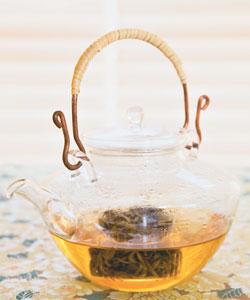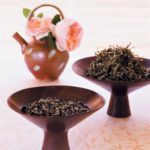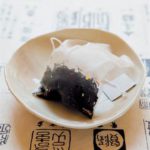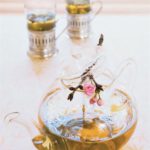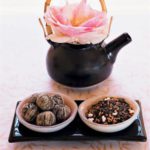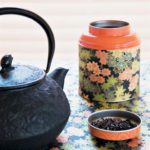Tea drinkers often associate tea with the British tradition of afternoon tea, which is usually a black tea from one of the Empire’s colonies – Assam and Darjeeling from India or an Orange Pekoe from Ceylon, served with a drop of milk and slightly sweetened. Slowly though, we are discovering what connoisseurs have known for years: that there are as many varieties of tea in China as there are wines in France.
Silver Needle, Precious Dew, Black Dragon, Emperor, Gunpowder and Oriental Beauty – one could be forgiven for thinking such exotic names belong to pedigreed racehorses. They are in fact the names of Chinese and Japanese teas. But names are only part of the charm of drinking these teas; their aromas and flavours along with the health benefits are fast winning over traditional palates.
It is believed that tea has been grown in China for more than 5 000 years. According to legend the black tea we call “English tea” was discovered by accident when a ship belonging to the European shipping company, The Dutch East India Company, was transporting Chinese green tea from the east when the tea fermented in the hold during the voyage. China still produces fermented black tea for the European market, but it is the unfermented green teas, of which China and Japan are the exclusive producers, that are now attracting attention.
THE VARIETIES
Below we list four types of tea: white, green, oolong and black, each representing a stage in the processing of tea. White tea, extremely delicate, subtle and fragrant, is as different to the black tea we take with milk and sugar as water is to wine. It is the tea that is harvested first, before the buds have fully opened, plucking only the bud and first leaf. Unlike green, semi-fermented and fermented teas, it undergoes the least processing.
Other teas are made from the mature leaves of the tea plant, which are plucked, crushed and rolled and, depending on the type of tea, fermented (a form of oxidation) in varying degrees, resulting in tea ranging from pale gold to black in colour. Green tea is not fermented; oolong is semi-fermented and black tea, by far the most common, is fully fermented, accounting for its brackish colour.
WHITE TEA
White tea is made from the small immature buds of the tea plant and produces a pale, fragrant and subtle brew.
GREEN TEA
Delicate, fragrant and sometimes perfumed with the buds of jasmine, green tea is slightly darker than white tea. Its brewing has to be carefully monitored as a second too long in the pot and it becomes bitter. The most unusual of the Japanese green teas is Genmaicha, meaning “Japanese rice”, a curious blend of green tea mixed with toasted rice and popped corn. Green tea leaves can also be hand-rolled into small buds, known as pearls, that then unfurl in your teacup to produce a tea that is light and aromatic.
OOLONG TEA
A semi-fermented tea halfway between green and black tea, it is pale brown in colour and refreshing.
BLACK TEA
There are many varieties of black tea, mostly sourced from India, Tanzania, Kenya and Malawi, which produce a rich brew. They are very dark in colour with a tendency towards tannic, bitter flavours if allowed to brew too long, which might explain the common addition of sugar and milk.
YOUR HEALTH
Tea contains vitamins and minerals, is low in calories and contains next to no fat. Green tea is especially low in theine – the caffeine found in tea – and antioxidant compounds that defend the body against free radicals that can cause ageing. It is drunk as a digestive either before or after a meal. No green tea should be drunk with milk or sugar. The drinking of tea in China and Japan is a sophisticated ritual that is almost sacred in its traditions. The tea ceremony includes a silent contemplation of the ritual prior to commencement and a reflective preparation process. Our busy modern lives leave little time for lengthy tea ceremonies and meditation. Hopefully the interest ignited by these fascinating teas will lead us to what the Japanese call “the way of tea”, incorporating these ancient traditions into our modern lives.
HOW TO MAKE THE PERFECT CUP
- Boil fresh water in the kettle (water should only be boiled once).
- Warm the teapot or cup by adding a little hot water and leaving it to stand for two minutes, then throwing it out.
- Add the tea to the cup and pour the freshly boiled water over it. The colour of tea emerges before the flavour develops so let it stand for anything from two to four minutes, depending on your preferred strength.
- Now comes the difficult part: purists will argue that adding anything to your tea, be it sugar, milk or lemon, detracts from its flavour, but this is largely dependant on the quality and type of tea and personal taste. Green tea, however, certainly does not benefit from the addition of milk, perhaps just a touch of sugar at the most (the Turks take their green tea extremely sweet). Black tea works well with lemon or milk and sugar.

